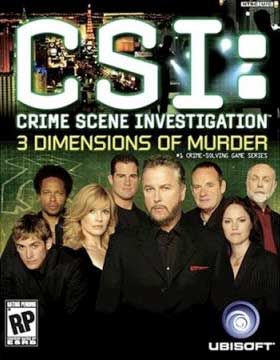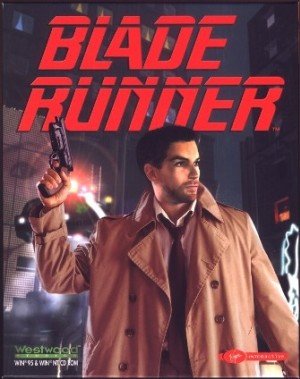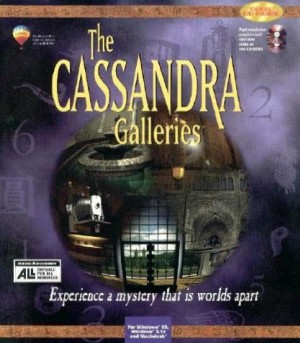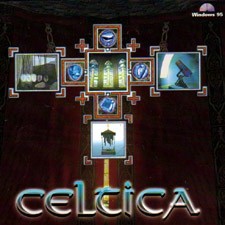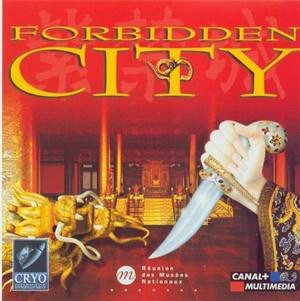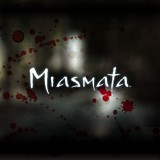Review for CSI: 3 Dimensions of Murder
The name CSI needs no introduction, and after several highly-formulaic PC adventures based on the television series, how much is there to say about CSI: 3 Dimensions of Murder, the latest iteration of the popular crime drama? Well, there may not be much to say in terms of introduction, but thankfully the game does have several new things to offer, beginning with a brand new developer. Telltale Games has taken the reins from the previous developer, 369 Interactive, and with this new title they have promised to improve upon the groundwork laid by the three previous games. The name itself refers to one such improvement – specifically, its new 3D game engine. But other dimensions have been enhanced as well, from graphics to gameplay to story, though none in any significant way. In this regard, 3 Dimensions of Murder is more like 2 ½ dimensions of pretty good, but that's still a definite step above any of the CSI games that came before.
The game begins with a somewhat unnecessary tutorial. I say "somewhat" because the point and click interface is pretty simple to get a handle on, and it's only minimally different from the previous titles. But since the name CSI alone will appeal to many non-gamers, it is probably a feature that will be welcomed by them, particularly if they are only discovering the series now. Luckily, this is optional and seasoned adventure gamers will want to skip past it entirely.
The game officially kicks off in a familiar fashion with you taking on the role of an anonymous rookie CSI agent who is helped in each case by a different CSI from the TV show. After a brief foray into the CSI: Miami spinoff with the last game, the series wisely returns to the more popular Las Vegas cast this time around. Several prominent characters from the show make appearances, including Gil Grissom, Sara Sidle, and Nick Stokes, many of whom are voiced by the actors who play them on television.
As the first case of the game unfolds, both the similarities and changes to the gameplay will become apparent to those who have played any of the CSI games before. You'll spend most of your time investigating crime scenes, interrogating suspects, and collecting evidence using your vast array of CSI tools such as the UV light, fingerprint powder, and Luminol to make all those hidden blood stains appear, with the eventual goal of obtaining a warrant and arresting a suspect.
A small but necessary improvement is in the area of analysis. In addition to having access to the Mobile Analysis Unit in the field for the first time in the series, now you'll input all of the evidence for analysis yourself instead of the lab technician doing it for you. It always seemed odd before that in order to do your analysis, you had to have someone else put it under a microscope or into a computer for you first. In 3 Dimensions of Murder, you will do things such as matching fingerprints and DNA samples, researching chemical substances, and reconstructing broken pieces of evidence. This, along with carefully examining crime scenes, is what makes up the majority of the puzzle solving aspect of this game. There are very few conventional puzzles, with no safes to crack, slider puzzles to solve, or mazes to get lost in. This is certainly a positive for this game, which is much more rooted in reality and logical roadblocks than contrived ones.
While it is doubtful that players will get completely stumped very often during a case, the game does employ three different difficulty settings, as well as several options for hints, if needed, to help the player along. At any time during the game, you can change the level of difficulty between Normal, Advanced, and Expert. While Normal mode won't ever solve anything for you, it does help with such things as highlighting objects and advising you if you've found everything at a given location. By choosing the more difficult modes, this assistance is eliminated – no guidance is offered, and even hotspot indicators are taken away, making it more difficult for the player to know whether they have found everything. The three different settings are a nice touch because players new to the genre will definitely find the Normal setting helpful, while veterans will likely find it too easy and prefer the Expert setting. The game also allows you to individually pick and choose which game options you want rather than simply selecting one of the default difficulty levels. And if more specific help is needed, it is possible to receive hints from your assigned partner on each case. Keep in mind, though, that at the end of each case you will be given a ranking based on your performance, and the more hints you seek, the lower your score will be. The score doesn't really matter, however, as a high score no longer unlocks any extras at the end of each case, which was a nice feature of the previous titles.
Like the gameplay, the interface is relatively unchanged. Your inventory appears at the bottom of the screen and is separated into three sectors: Trace, Documents/Photos, and Items. Where the interface differs is that instead of having to drag a detection tool from your inventory onto a hotspot in order to collect evidence, you now click on the hotspot and a radial menu of available tools will appear. While this is a small change, it does make the inventory system more streamlined and less cluttered. This is also an aspect of the game where the different difficulty settings come into play. On the Normal setting, most of your tools will be unavailable for any given piece of evidence, making it much more obvious which tool you need to employ, whereas on the harder settings, all tools are available at all times, making the correct tool a little more ambiguous.
Alongside the inventory are icons to send you to the options screen, move to a new location, or view the case file. The case file is used to basically summarize what you know about the case thus far, as well as log the hints that you have received. As you come across new suspects, they are added to the file with all information that pertains to their possible involvement in the crime.
While the gameplay mechanics have undergone only minor changes, the game engine is a completely new one, although its implementation still shares a lot in common with its predecessors. With the old engine, you would move from one node to another and at each spot you could rotate 360-degrees. The characters were all modeled in 3D but the backgrounds were static and often very muddy looking. The new, updated engine renders the backgrounds in real-time 3D, and character models are much sharper and improved in detail and lifelikeness. The benefit of the new engine is its ability to let you zoom in on objects and rotate the view for better perspectives. However, the freedom in close-ups doesn't translate to a freedom of movement overall. Despite being in 3D, the game is still rooted in node-based, point and click navigation, and now there is no 360-degree rotation. In fact, you are generally only able to see about half of the location you're in at any given time. So anyone walking into this game expecting complete freedom to investigate will be disappointed.
Despite all of the attention given to the new engine, the game's biggest improvement is in its cases and storytelling. Over the course of the game, you will solve five new cases. I found all of the cases to be longer and much more involved than in previous titles, with each taking approximately 2-2.5 hours to complete. The twists in the stories are generally well executed and I often felt a sense of accomplishment every time I uncovered a critical piece of evidence. One that I enjoyed in particular was the "First Person Shooter" case, which deals with the state of the gaming industry and contains various veiled references to the doomed fate of a particular highly-ancticipated adventure. Anyone who has been to a gaming convention will get a kick out of some of the inside jokes, yet the mystery is interesting enough that even those unfamiliar with the references will still enjoy themselves.
Also helping to make the stories stand out more is improved dialogue, giving each character a sharply defined personality. This is supported by above average voice acting all around – not just for the main characters but also for every character you encounter. Occasionally, however, you will run into errors in the dialogue system, like talking to a suspect about something that they aren't supposed to know yet, only to tell them that piece of information later on in the conversation. Slight inconsistencies like this are generally easy to overlook, though, since the cases themselves are so engrossing.
The game proved relatively stable in my experience, although I did encounter a few glitches, such as seemingly random freezes at the loading screen. These were thankfully infrequent, but notable problems nonetheless.
3 Dimensions of Murder definitely shows improvement over the rest of the CSI library while staying true to the formula established by those games. The small enhancements to graphics and storyline, along with the increased engine capabilities, all add up to make what is clearly the best game in the series, though still leaving plenty of room for further improvement. If you have played and enjoyed the previous CSI games, there is no doubt that this is a game you will want to pick up, and if you are new to the series, this is definitely the one you want to start with. The game will certainly appeal more to CSI fans, but even for those with little knowledge of the television show – such as myself – there should be enough here to interest the amateur crime scene investigator in all of us.


